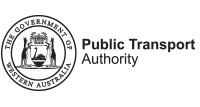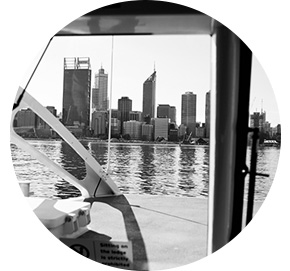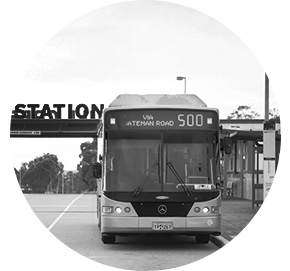- Home
- Financials
- Notes to the financial statements
- Fair value measurements
Fair value measurements
| 2014 Assets measured at fair value: |
Level 1 $000 |
Level 2 $000 |
Level 3 $000 |
Fair value at end of period $000 |
|---|---|---|---|---|
| Land (Note 23) | 0 | 0 | 397,769 | 397,769 |
| Buildings (Note 23) | 0 | 0 | 34,927 | 34,927 |
| Freight network infrastructure (Note 23) | 0 | 0 | 1,200,176 | 1,200,176 |
| Rollingstock (Note 23) | 0 | 533,661 | 47,259 | 580,920 |
| Railway infrastructure (Note 23) | 0 | 0 | 2,457,421 | 2,457,421 |
| Bus infrastructure (Note 23) | 0 | 0 | 133,668 | 133,668 |
| Vessels (Note 23) | 0 | 0 | 1,313 | 1,313 |
| Buses (Note 23) | 0 | 389,045 | 0 | 389,045 |
| Non-current assets classified as held for sale (Note 25) | 0 | 10,380 | 0 | 10,380 |
| 0 | 933,086 | 4,272,533 | 5,205,619 |
There were no transfers between Levels 1, 2 or 3 during the period.
Valuation techniques to derive Level 2 fair values
Level 2 fair values of Rollingstock, Buses and Non-current assets classified as held for sale are derived using the market approach. Market evidence of sales prices of Rollingstock and Bus contracts held by the PTA are used to determine price per railcar and bus respectively. It should be noted that Rollingstock is classified as both level 2 and level 3 on the fair value hierarchy as market information is available for urban railcars, however, regional rollingstock has been valued by an independent third party as no observable inputs are available.
Non-current assets held for sale have been written down to fair value less costs to sell. Fair value has been determined by reference to market evidence of sales prices of comparable assets.
Fair value measurements using significant unobservable inputs (Level 3)
2014 |
Land $000 |
Buildings $000 |
Freight network infrastructure $000 |
Rollingstock $000 |
Railway infrastructure $000 |
Bus infrastructure $000 |
Vessels $000 |
|---|---|---|---|---|---|---|---|
| Fair Value at start of period | 360,833 | 107,841 | 1,190,509 | 50,453 | 2,050,640 | 125,317 | 1,269 |
| Additions | 0 | 0 | 0 | 0 | 0 | 4,443 | 0 |
| Revaluation increments/(decrements) recognised in Profit or Loss |
0 | 0 | 0 | 0 | 0 | 0 | 0 |
| Revaluation increments/(decrements) recognised in Other Comprehensive Income | 36,936 | (2,685) | 0 | (1,881) | 0 | 10,587 | 124 |
| Transfers | 0 | (65,324) | 109,180 | 0 | 489,867 | 2,152 | 0 |
| Disposals | 0 | 0 | (15,257) | 0 | (208) | (1,928) | 0 |
| Depreciation Expense | 0 | (4,905) | (84,256) | (1,313) | (82,878) | (6,903) | (80) |
| Fair Value at end of period | 397,769 | 34,927 | 1,200,176 | 47,259 | 2,457,421 | 133,668 | 1,313 |
| Total gains or losses for the period included in profit or loss, under ‘Other Gains’ | 0 | 0 | 0 | 0 | 0 | 0 | 0 |
| Change in unrealised gains or losses for the period included in profit or loss for assets held at the end of the reporting period | 0 | 0 | 0 | 0 | 0 | 0 | 0 |
Valuation processes
There were no changes in valuation techniques during the period.
Transfers in and out of a fair value level are recognised on the date of the event or change in circumstances that caused the transfer. Transfers are generally limited to assets newly classified as non-current assets held for sale as Treasurer’s instructions require valuations of land, buildings and infrastructure to be categorised within Level 3 where the valuations will utilise significant Level 3 inputs on a recurring basis.
Fair value for existing use specialised buildings and infrastructure assets is determined by reference to the cost of replacing the remaining future economic benefits embodied in the asset, i.e. the depreciated replacement cost. Depreciated replacement cost is the current replacement cost of an asset less accumulated depreciation calculated on the basis of such cost to reflect the already consumed or expired economic benefit, or obsolescence, and optimisation (where applicable) of the asset. Current replacement cost is generally determined by reference to the market-observable replacement cost of a substitute asset of comparable utility and the gross project size specifications.
For some specialised buildings and infrastructure assets, the current replacement cost is determined by reference to the historical cost adjusted by relevant indices.
Fair value for restricted use land is based on market value, by either using market evidence of sales of comparable land that is unrestricted less restoration costs to return the site to a vacant and marketable condition (low restricted use land), or, comparison with market evidence for land with low level utility (high restricted use land).
Significant Level 3 inputs used by the PTA are derived and evaluated as follows:
Selection of land with restricted utility
Fair value for restricted use land is determined by comparison with market evidence for land with low level utility. Relevant comparators of land with low level utility are selected by Landgate (Valuation Services).
Consumed economic benefit/obsolescence of asset
These are calculated by internal asset management experts with opinions taken under advice from external agencies when received in conjunction with valuation reports.
Replacement cost per square metre floor area (m2)
The costs of constructing specialised buildings with similar utility are extracted from 2014 valuation reports supplied by independent valuation experts Ralph Beattie Bosworth.
Replacement cost per individual items
The costs of significant specialised items for PTA buildings are extracted from 2014 valuation reports supplied by independent valuation experts Ralph Beattie Bosworth.
Replacement cost per kilometre of network
The costs of kilometres of rail track are extracted from 2010 valuation reports supplied by independent valuation experts Mitchell Munn Valuations.
Replacement cost per railcar components
The costs of railcar components are extracted from 2014 valuation reports supplied by independent valuation experts Interfeet Technologies.
Tunnel Replacement cost per metre
The costs of tunnel replacement are extracted from 2012 valuation reports prepared by the PTA's Senior Rail Project Engineer.
Station Replacement cost per square metre floor area (m2)
The costs of station structures are extracted from 2012 valuation reports supplied by independent valuation experts Turner & Townsend.
Movements in relevant CPI percentages over 4 financial years
The movements in relevant CPI percentages over the last 4 financial years are derived from taking the average movement in the Perth CPI and National Transport CPI from June Quarter 2010 to the March Quarter 2014.
Information about significant unobservable inputs (Level 3) in fair value measurements
| Description and fair value as at 30 June 2014 $000 |
Valuation technique(s) |
Unobservable inputs |
Range of unobservable inputs (weighted average) | Relationship of unobservable inputs to fair value |
|
|---|---|---|---|---|---|
| Land | 397,769 | Market approach | Selection of land with similar approximate utility | $0.35 - $587.56 per m2 ($1.30 per m2) | Higher value of similar land increases estimated fair value |
| Buildings | 34,927 | Depreciated Replacement Cost | Consumed economic benefit/ obsolescence of asset | 2% - 11.3% per year (2.08% per year) | Greater consumption of economic benefit or increased obsolescence lowers fair value |
| Replacement cost per square metre floor area (m2) | $10 - $3,500 per m2 ($824.94 per m2) | Higher replacement cost per square metre increases fair value | |||
| Replacement cost per individual items | $3,000 - $350,000 per item ($80,866.67 per item) | Higher replacement cost per item increases fair value | |||
| Freight network infrastructure | 1,200,176 | Depreciated Replacement Cost | Consumed economic benefit/ obsolescence of asset | 1% - 10% per year (1.66% per year) | Greater consumption of economic benefit or increased obsolescence lowers fair value |
| Replacement cost per kilometre of network | $921,000 per kilometre | Higher replacement cost per kilometre increases fair value | |||
| Rollingstock | 47,259 | Depreciated Replacement Cost | Consumed economic benefit/ obsolescence of asset | 4% - 10.6% per year (4.17% per year) | Greater consumption of economic benefit or increased obsolescence lowers fair value |
| Replacement cost per railcar components | $13,000 - $5,150,000 ($990,894 per component) | Higher replacement cost per component increases fair value | |||
| Railway infrastructure | 2,457,421 | Depreciated Replacement Cost | Consumed economic benefit/ obsolescence of asset | 1% - 100% per year (2.84% per year) | Greater consumption of economic benefit or increased obsolescence lowers fair value |
| Tunnel Replacement cost per metre | $10,330 per metre | Higher replacement cost per metre increases fair value | |||
| Station Replacement cost per square metre floor area (m2) | $2,078.15 - $3,023 per m2 ($2,310.76 per m2) | Higher replacement cost per square metre increases fair value | |||
| Description and fair value as at 30 June 2014 $000 |
Valuation technique(s) |
Unobservable inputs |
Range of unobservable inputs (weighted average) | Relationship of unobservable inputs to fair value |
|
|---|---|---|---|---|---|
| Bus infrastructure | 133,668 | Depreciated Replacement Cost | Consumed economic benefit/ obsolescence of asset | 1¼% - 2% per year (1.67% per year) | Greater consumption of economic benefit or increased obsolescence lowers fair value |
| Replacement cost per square metre floor area (m2) | $5 - $3,080 per m2 ($199.75 per m2) | Higher replacement cost per square metre increases fair value | |||
| Replacement cost per individual items | $5,000 - $360,000 per item ($70,967.05 per item) | Higher replacement cost per item increases fair value | |||
| Vessels | 1,313 | Depreciated Replacement Cost | Consumed economic benefit/ obsolescence of asset | 5% - 25% per year (15% per year) | Greater consumption of economic benefit or increased obsolescence lowers fair value |
| Movements in relevant CPI percentages over 4 financial years | 9.92% - 10.92% over 4 years (10.42% over 4 years) | Higher replacement cost per CPI increases fair value | |||
Reconciliations of the opening and closing balances are provided in Note 23.
Basis of Valuation
In the absence of market-based evidence, due to the specialised nature of some non-financial assets, these assets are valued at Level 3 of the fair value hierarchy on an existing use basis. The existing use basis recognises that restrictions or limitations have been placed on their use and disposal when they are not determined to be surplus to requirements. These restrictions are imposed by virtue of the assets being held to deliver a specific community service.


